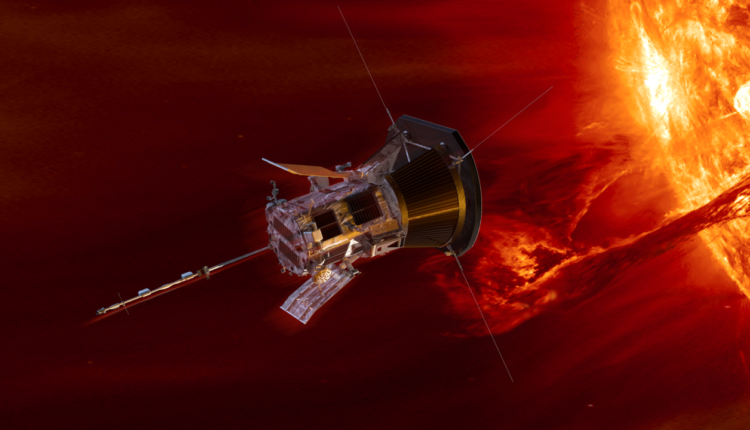NASA’s Parker Solar Probe Makes Historic Close Approach to the Sun
NASA’s Parker Solar Probe has achieved a groundbreaking feat by surviving the closest-ever flyby of the Sun. This historic mission, launched in 2018, has taken humanity closer to the solar surface than ever before, unlocking mysteries about our star that could transform our understanding of the solar system.
A Record-Breaking Milestone
On Christmas Eve, the Parker Solar Probe approached the Sun’s surface at an unprecedented distance of 3.8 million miles (6.1 million km). This is remarkably close, considering the Earth is 93 million miles away. To put it into perspective, if the Sun and Earth were one meter apart, Parker was just 4 centimeters away from the Sun.
The probe braved scorching temperatures of 1,800°F (980°C) and intense radiation during its record-setting encounter. Moving at an astounding 430,000 mph (692,000 km/h), Parker became the fastest human-made object, capable of crossing the distance from London to New York in less than 30 seconds. Despite these extreme conditions, the spacecraft’s advanced carbon-composite shield, measuring 11.5 cm (4.5 inches) thick, safeguarded its systems.
Unraveling the Sun’s Mysteries
The primary objective of the mission is to study the Sun’s outer atmosphere, known as the corona, which reaches millions of degrees—significantly hotter than the Sun’s surface, which is about 6,000°C. This temperature discrepancy has baffled scientists for decades.
Dr. Jenifer Millard, an astronomer at Fifth Star Labs, explained the significance of this research: “The corona, which you can see during solar eclipses, is mysteriously hotter than the surface. Parker’s data could finally help us understand how this is possible.”
By flying through the corona, the Parker Solar Probe is collecting crucial data on solar wind, the continuous flow of charged particles emitted by the Sun. This data is vital for understanding how solar wind is generated and how energetic particles accelerate to near-light speeds.
The Impact of Solar Research
Understanding the Sun is critical because solar activity has direct implications for life on Earth. When solar wind interacts with Earth’s magnetic field, it creates stunning auroras, but it can also disrupt power grids, satellites, and communication systems. With better knowledge of solar wind and space weather, scientists can develop systems to protect Earth from these disruptions.
Challenges and Triumphs
NASA experienced a tense wait during Parker’s closest approach, as the spacecraft was out of communication while navigating the Sun’s outer atmosphere. On December 28, just before midnight EST, Parker sent a signal confirming it had survived the encounter and was operating normally.
Dr. Nicola Fox, NASA’s head of science, highlighted the probe’s resilience: “I always worry about the spacecraft, but it’s designed to endure these brutal conditions. It’s a tough, tough little spacecraft.”
Why It Matters
Parker’s mission is crucial for addressing fundamental questions about the Sun. By studying the corona and solar wind, scientists aim to uncover how solar particles gain immense energy and heat. This knowledge will not only advance space science but also help mitigate the effects of space weather on modern technology.
As Parker continues its daring journey, it brings humanity closer to understanding the Sun’s complex behavior. This historic milestone represents a leap forward in space exploration, ensuring Parker’s legacy as a mission that bridged the gap between humanity and its star.

